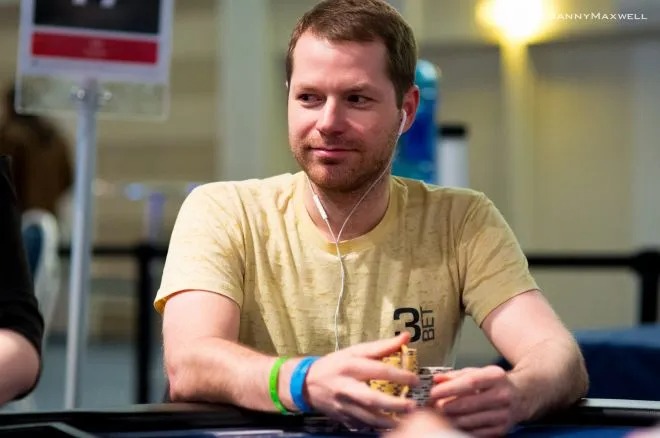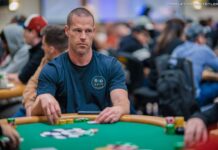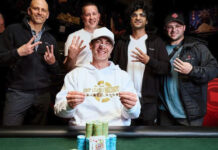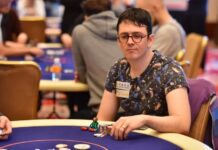I recently played a fun hand in a $5,000 buy-in World Poker Tour event that illustrates a concept you must master if you want to succeed at tournament poker. With blinds at 600-1,200 with a 1,200 big blind ante, everyone folded to me in the hijack seat and I raised to 3,000 out of my 60,000 effective stack with 9Spade Suit 9Diamond Suit. The action folded around to a good, tight, aggressive player in the big blind who three-bet to 10,600.
At this point, I can either go all-in or call. Folding would be much too tight. 9-9 is a premium hand that can be played for a large number of big blinds. If you thought the three-bettor was particularly tight, folding would then become acceptable, but even then, it is nitty.
Calling is a reasonable option if you have a good idea as to how your opponent will play after the flop. If he will play straightforwardly, you can call, knowing that when he bets the flop, he will usually have a strong hand. If you know he will bet the flop with his entire range, you know to not fold too often. If you are unsure how he will play after the flop, it usually makes the most sense to go all-in. While this will result in you going broke whenever your opponent has an over pair or wins a flip, he will also ensure you do not make a postflop mistake while also forcing many hands with 50 percent equity (like A-J and K-10) to fold.
This time I decided to call. The flop came 10Diamond Suit 8Club Suit 3Club Suit and my opponent bet 7,200 into the 23,400 pot.
At this point, 9-9 is again simply too strong to fold. In general, when the preflop three-bettor makes a small flop continuation bet, you can be somewhat sure you are against your opponent’s entire range, which includes many strong preflop hands that you crush, such as A-K, as well as all the potential bluffs, like 7-6. You may also be against a hand like 8-7 or A-3 that is betting for value and protection. Knowing this, calling is usually the best play. The main problem with going all-in is that your opponent will fold most of his worse hands that you crush and will call with all his strong hands that crush you. Clearly that is not a great spot to be in.
I called. The turn was the 3Spade Suit and my opponent bet 21,300 into the 37,800 pot.
What a dicey spot! When the opponent keeps betting you can be quite certain that he either has top pair or a better made hand, a draw, or a total bluff. When you have a marginal made hand against a polarized range, it makes sense to either call or fold because again, if you raise, you will only get called when you are crushed. Situations like this are interesting because some players will bet the turn with only their strong hands, others will bet the turn with all their bluffs but will not continue bluffing on the river, while some will bluff on the turn and river. It is difficult to know what to do! However, if you are aware of your opponent’s tendencies, you can get well out of line to exploit them.
I called. The river was the 10Heart Suit. My opponent checked.
Given the opponent either has an overpair that will not fold to a bet or a junky hand, it does not make sense to bet because the hands that beat us will always call and the hands that we beat will always fold. While you should certainly not expect to win every time when you show down your 9-9, checking behind is by far the best play, especially since if you lose, you retain a manageable 25,900 stack.
I checked and won against my opponent’s 7-5 offsuit.
That was not what I was expecting to see. From time to time, even tight, aggressive players will get out of line. By not pushing all-in preflop or by raising postflop, I allowed my opponent to continue bluffing with a hand that was drawing dead. Sometimes poker is easy! ♠
Jonathan Little is a two-time WPT champion with more than $6 million in tournament winnings. Each week, he posts an educational blog and podcast at JonathanLittlePoker.com, where you can get a FREE poker training video that details five things you must master if you want to win at tournament poker. You can also sign up for his FREE Excelling at No Limit Hold’em webinars at HoldemBook.com/signup.












